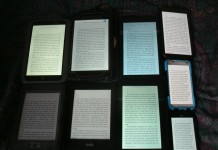 On TechCrunch, Paul Carr has an interesting piece on online journalism being used to show up traditional print journalism. (It is also being covered by ReadWriteWeb.) It talks about Adam Penenberg, who in 1998 exposed one of print journalism’s big names of the day, Stephen Glass, for fabricating his news stories.
On TechCrunch, Paul Carr has an interesting piece on online journalism being used to show up traditional print journalism. (It is also being covered by ReadWriteWeb.) It talks about Adam Penenberg, who in 1998 exposed one of print journalism’s big names of the day, Stephen Glass, for fabricating his news stories.
Penenberg has been at it again. Having written a book in 2003 about Ford’s negligent attitude toward the safety of its SUVs concerning a woman, Donna Bailey, who was nearly killed in an accident, he recently learned of a recent court award of $131 million in damages to the family of New York Mets prospect Brian Cole, who died in an SUV accident in 2001. And after several hours of waiting for it to show up, he also learned that, for whatever reason, no traditional news source was running the story.
And that’s when he decided: if no one else was going to break the story, he’d have to do it himself. Firing up Twitter, the reporter started to do his job, in dozens of 140 character bursts – starting with the lede
: the sports star and the $131 million damages – before moving on to the background
, the implications
for Ford and finally a play by play of the Donna Bailey accident and how – incredibly – Ford had apparently decided it was cheaper for them to settle the lawsuits brought against them than it was to retool the Explorer so it didn’t kill any more people.
It didn’t take long before wire services and news agencies started picking up the story after all.
In the TechCrunch piece, Carr wonders why it is that 12 years later, it’s still Penenberg using tools of digital journalism to expose inadequacies of more traditional print journalism. It turns out that, at least in this case, part of it might be that Ford is one of the world’s biggest advertisers at a time when print media are desperate for any advertising dollars they can get.
Carr wonders of Penenberg:
So, has he created a new kind of hybrid journalism with his Ford tweets – somewhere between breaking news and long-form journalism. We’ve become used to seeing stories unfolding in real time through social media – are we now seeing the potential for professional journalists to use Twitter to tell properly researched news stories, in a way that makes the events feel very personal, and even more dramatic?
Penenberg admits he doesn’t know, though he will be using the format more often from now on.
For myself, I wonder how I would have reacted if I had been one of Penenberg’s Twitter followers at the time. Given that Twitter is meant for bite-size updates of what your friends are doing, or one or two favorite links at a time, floods of tweets from people livetweeting events have been a source of frequent complaints. It’s hard to be sure how to react to someone posting even an important news story in the form of a flood of dozens of tweets.
































